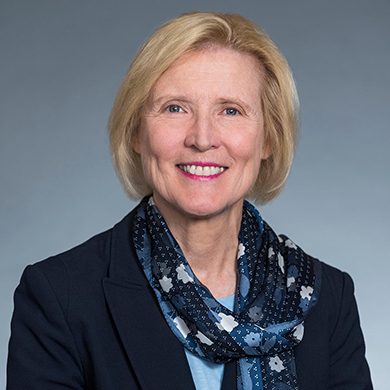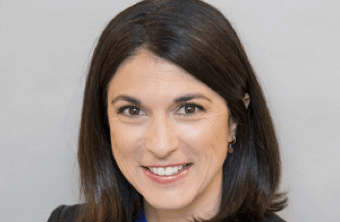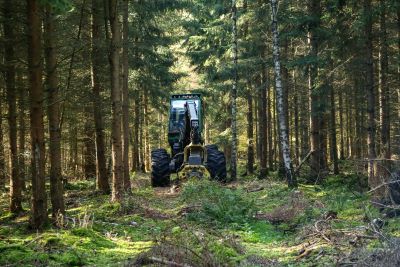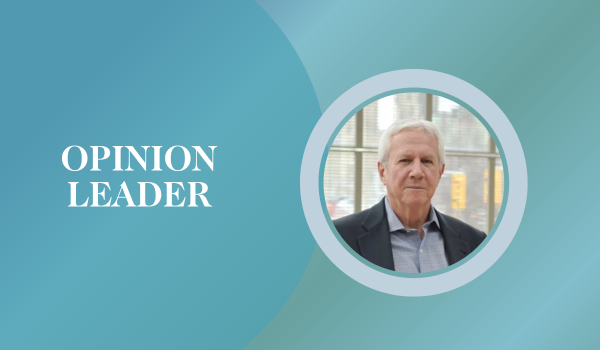Roadmap for research in Canada: Q&A with Roseann O’Reilly Runte, former head of Canada Foundation for Innovation
 Dr. Roseann O’Reilly Runte (photo at right), PhD, stepped down at the end of September as president and CEO of the Canada Foundation for Innovation (CFI) after leading the organization for seven years. Prior to becoming the CFI’s leader in August 2017, Runte had served as the president and vice-chancellor of Carleton University in Ottawa since 2008. Her previous roles included president of l’Université Sainte-Anne in Nova Scotia, principal of Glendon College at York University, president of Victoria University at the University of Toronto, and president of Old Dominion University in Norfolk, Virginia.
Dr. Roseann O’Reilly Runte (photo at right), PhD, stepped down at the end of September as president and CEO of the Canada Foundation for Innovation (CFI) after leading the organization for seven years. Prior to becoming the CFI’s leader in August 2017, Runte had served as the president and vice-chancellor of Carleton University in Ottawa since 2008. Her previous roles included president of l’Université Sainte-Anne in Nova Scotia, principal of Glendon College at York University, president of Victoria University at the University of Toronto, and president of Old Dominion University in Norfolk, Virginia.
Runte is the author of the book Canadians Who Innovate (Simon & Schuster), which profiles some of the most creative and inventive Canadians. She also is a creative writer and has received a poetry prize from the Académie française. She has been awarded the Order of Canada, the French Order of Merit, fellowship in the Royal Society of Canada, the Palmes Académiques, along with several prizes for her work on the environment, and for community and national service.
Before stepping down from the CFI, Runte did an enormous amount of research, along with consultations with colleagues, and wrote a document titled Considerations for a Roadmap for Research in Canada. The document – looking through a lens of research and innovation – covers Canada’s people, space, place, time and the right tools, and international plan and strategies. It looks at Canada’s “brilliant ideas,” mission-driven research, principles, the how of creating a national strategic research strategy, and the goals. While not an official CFI publication, Runte’s document has been widely circulated to stakeholders and others in Canada’s research innovation ecosystem.
Just prior to stepping down from the CFI, Runte talked with Mark Lowey, Research Money’s managing editor, about her new document and its purpose, the need for Canada to have a strategic research strategy, the “data opportunity” for the country, how Canada’s innovation ecosystem changed during the time she led the CFI, and what accomplishments she’s most proud of.
R$: As you were getting ready to step down from the Canada Foundation for Innovation (CFI), you wrote this new document, Considerations for a Roadmap for Research in Canada. What is the purpose of this document, and what do you hope it will achieve?
RR: We all agree that research contributes to the health and well-being of communities, to a robust economy and a sustainable environment. It therefore follows that investing in research provides a cornerstone for the future of the country. To shape an investment in research, we need – as was said in the Naylor report (Canada’s Fundamental Science Review) and the Bouchard report (Report of the Advisory Panel on the Federal Research Support System) – a strategic plan for research.
As I step down, I look back with pleasure on the accomplishments and contributions of the research community with the CFI and the other granting councils. With the government of Canada, together we’ve all achieved a great deal. But I think we should also think about the future, and there’s a lot left to be done.
So for this reason, I sat down and did a lot of research. After having done the research, I consulted a lot of people and reflected. I think that people agree on principles and priorities and the process and the possibilities that are open to Canada. The document is a result of that, and it’s intended to reflect the directions that we should be moving and our absolute support for excellence and peer review.
The document focuses on the importance of people – the researchers, the students, the technical staff and community scholars. And it iterates a profound respect first of all for the First Nations and Métis scholars and recognizes their rights.
R$: What are the key takeaways in this new document?
RR: The document speaks first to people. People are the most important resource that we have. The document also speaks to space, our place in the world, the possibilities and responsibilities we have to attack global problems. It talks about the potential of Northern development, with the essential leadership of the Inuit and other residents in protecting the environment.
The document considers natural resources, including arable land, forests, oceans and minerals. It also proposes the development of data as a resource and not as a problem. If you ask people, they’ll say we have a problem [with data]: we don’t have enough storage, it’s not organized enough, we don’t have [rules] for systemizing it. There are nations around the world that are looking at Canada to link to and buy places to store data, because of the fact that land is less expensive here than some places in the world. It’s cooler here [an advantage in cooling large data centres], and we have available electricity.
If you then go a little further into the statistics, you find that Canada is already the third-biggest country in the world for the number of data storage facilities. So we have something that we can build on. If you look at data and think of it as a resource, we’re collecting the resources [data] of the world. Other times we have resources, we pull them out of the ground and we send them away [by selling them]. With data, we’re taking the resources of the world and we can develop them and we can create jobs for technicians and research scientists who will work on developing that data.
If you think about it, knowledge is power and people celebrate libraries, the national libraries of the world. Databanks are going to be the next libraries. And if we are one of the biggest databanks of the world and can specialize in that, that’s an area we should move forward in.
Also in the document, we’ve got opportunities that foster innovation and discovery through international collaboration. I say it’s an age of collaboration. We do pretty well looking south of the border and looking at Europe, especially with Horizon Europe. But we should also look at the East and the Global South. The Global South has similar resources, and they have a population that’s quite widely spread across great distances. There are ways that we can work together to solve problems.
The East is an area that we don’t often consider as something that we should look at. Yet when I read the strategic research plans for the Eastern nations and countries of the world, I see enormous development in research and research facilities. If they actually realize those plans, we really should be collaborating with them. There’s Taiwan, South Korea, Japan, China even. If we’re going to do cutting-edge research, we have to look at all of our neighbours.
Also, we have to always support extraordinary research in projects like artificial intelligence and quantum computing technologies. When there are new, brilliant ideas that come forward, they will give us inspiration and hope for the future of the country.
R$: You mentioned the need for Canada to have a strategic plan for research. Do you have any thoughts about why we don’t yet have such a plan?
RR: Because they’re just waiting for me to come and do it! (She laughs).
I can’t say. But I can say when the Bouchard report came out last year in June, I got together most of the heads of the granting councils and the Royal Society of Canada and the U15. We got together and I said to them, “Look, there are many things that we all agree on. Let’s make a list of what we agree on.” So we did.
And after that, I said, “Okay, I volunteer. I’m going to write a value proposition for research based on the areas we all agree on.” I did it and I sent it out to them, and they all commented on it. And then I sent it out to more people, and they commented on it. We got a document that everybody agreed on.
I start with the value proposition. Then you have the general research plan. After that will, of course, come the action plan – what are you going to do to get there, and what are the exact targets. That remains to be figured out. But I’m stepping down. So this [new document] is my present to the country, because I think we need this.
R$: A year ago, the CFI leadership coordinated the production of a document titled, Research in Canada, for Canada: A value proposition. How does this new document relate to/build upon that previous document, especially as the federal government moves forward in implementing the Bouchard report’s recommendations?
RR: The first document is kind of the vision piece. Then you have to get down into going from the vision to: How do we apply that vision to our reality? I went through over 20 years of all the grants of the CFI, of SSHRC (Social Sciences and Humanities Research Council), of NSERC (Natural Sciences and Engineering Research Council), of CIHR (Canadian Institutes of Health Research), and I looked at all the fields and all the locations where the grants were, so I could identify where the research strengths were across the country. Bioengineering, for example, was strong. But then it went down, and then it came up. But another field is going all the way up all the time, so this must be a better look at what we’re developing.
After that, I went through the strategic research plans of each of the [federal funding] agencies, of the U15 universities, 40 of the non-U15 universities, of the community colleges and polytechnics. And then I went through the research plans of nations of the world that published them, of Horizon Europe, of groups like Southeast Asia’s research plans,
Then I went back and said, well, we also have to look at areas of strength in places around the world where everybody is doing something, and if we don’t do it, we’ll be left out. But then I also had gaps in the world where there isn’t anything, and I was looking to see do we have something that could fit in the gap that could be something special that Canada could do that nobody else is doing.
After that, I then went and looked at the needs that we have in Canada. To break it down to a real simple example, we need to eat. We need agriculture and animal culture. We’re actually one of the largest producers of agricultural products in the world. So we should be investing in that for the future, and we should invest in it for more reasons than just because we need to eat, but because there is climate change. The climate is getting warmer, so we’re going to be moving our agriculture farther north. And the land in the north is grey soil, which will grow [different crops] in a different way. We have to figure out what those are and how you grow them with the different seasons.
Then we have the North and it’s not developed, and other nations are there looking at it strategically, looking at it militarily, looking at it like a transportation lane. This is about the livelihood of people up there. It’s our precious land and water. We should be doing something about it. And we are, but we could do more.
R$: Your new document certainly highlights the need to invest in data storage and management. Why is such investment important, and are the public and private sectors doing enough in this area?
RR: [The importance of] data is linked to the usage of data. We’re making enormous progress in genomics and in figuring out how diseases are transmitted – inherited or through epidemics. We will know more through data, and if we have that data we can trace what is going to be a problem. In Newfoundland, a research team led by Dr. Terry Lynn-Young, a molecular geneticist at Memorial University, used genomics to identify the gene mutation that causes a deadly heart condition that runs in families and causes unexpected death in young men. The researchers went to all the little communities and the outports, and they even looked in cemeteries to find where the families were. They found the young men who were susceptible to have the heart attack, and they agreed to be tested for the gene. They implanted defibrillators and saved a hundred lives in the first year.
So you’ve got medicine that’s going to use data, insurance and banking companies to figure out returns, the stock market that uses data analytics. Data is important in the economy, in medicine, in looking at sustainability and the environment.
The CFI has invested in data. For all of the documents from Murray Sinclair’s Truth and Reconciliation Commission, we funded the data centre and the processing to make all those records public so every Canadian can read them. We and other agencies in Canada have invested in data centres. For example, the National Research Council has invested in their data centre to collect and house data from the Square Kilometre Array radio telescope in South Africa. A lot of the data from the CERN particle accelerators in Switzerland is housed between TRIUMF (Canada’s particle accelerator, based in Vancouver) and Simon Fraser University.
There’s a really interesting project in Saskatchewan called SuperDARN (Super Dual Auroral Radar Network, an international network of high-frequency radars) that includes radar networks in the north of Canada. Canada has joined with 25 other [organizations] around the world, and they’re collecting data 365 days a year every single minute of every single day on what’s happening in the upper atmosphere. Whenever there’s an explosion on the surface of the Sun, it [affects electrically charged particles driven by the solar wind], which can produce storms that impact our near-Earth space weather. When the stock market went down and all the lights on the East Coast went out, that was caused by one of those storms. The SuperDARN researchers are collecting the data and tracking those explosions on the Sun, so that one of these days, they’re going to be able to have enough information to predict when the next explosion happens, so we pull the airplanes out of the air [before their navigation and radio communications are affected], and take other mitigation measures.
R$: You served as the CFI’s fifth president and CEO since August 2017. What are a couple of ways the CFI and Canada’s research and innovation ecosystem have changed in the seven years you’ve led the CFI?
RR: There’s been a growth in the number of small institutions and universities and colleges across all regions of the country. That means there are increasing demands for resources, as those institutions serve their regions and their regional environment and physical and cultural world. The large institutions have made extraordinary progress in putting Canada on the world stage as a valued collaborator in international projects, and become leaders in artificial intelligence and quantum.
There’s also growing interest in working across disciplines. Ten years ago, a scientist in biology was a biologist. Now when you see research grants, you see teams, and there’s a biologist and a chemist and a social scientist, and they’re all working together. You can explain that partly by the fact that they’re looking at global problems. To solve big problems, you need teams that look across disciplines.
There’s more and more desire among researchers to collaborate with each other, and the institutions want to collaborate with each other. We’ve gone from labs that belong to one project to core facilities that serve many projects. And we’ve gone to projects where institutions are sharing equipment and even working internationally to do that.
There’s also been recognition of the role of scientists in informing the public, in involving citizens as citizen scientists or community scientists, and in understanding the importance of the scientific endeavour in fostering international dialogue and understanding. There’s that additional role of scientists, who have always been there, but it’s really more highlighted and recognized today.
R$: Under your leadership, what are a couple of the CFI’s accomplishments that you’re most proud of?
RR: I didn’t do anything alone, it was the entire team at CFI including the CFI board, as well as the research community, the Government of Canada – everybody worked together. What we have achieved is stabilized and ongoing funding for the CFI, created the new Northern Fund, the new [funding] category for major research facilities (Major Science Initiatives Fund), increased international outreach and greater participation, making spaces for Canada on the world stage, collaboration with not only the Tri-councils but with the National Research Council, the Council of Canadian Academies, the Royal Society of Canada, Genome Canada and others.
We’ve also increased number of women and early-career researchers, and we’ve added special folders for the core facilities [to fund] research technicians, humanities and social scientists. We revised the College Fund, and we included not-for-profit organizations that weren’t included before. We also began the research that ended up being the Biosciences Research Infrastructure Fund.
R$: Why are you stepping down now from the CFI, and what are your future plans?
RR: I’m working on my own strategic plan! (She laughs).
I’m full of beans – I’m not retiring. I’m going to find ways that I can contribute to Canada. I’ve been working very hard at the CFI, so as soon as I finish, I’ll get onto that. Anything is possible.
Last year, I said to the CFI board that in another year I should step down and give a chance to somebody else. Ordinarily, people have five-year terms. I thought seven years is a good chunk of time: get some new energy, get a new point of view. That’s always great. It’s great for an organization, and it’s also great for an individual, because I can get all excited about something new.
R$
| Organizations: | |
| People: | |
| Topics: |
Events For Leaders in
Science, Tech, Innovation, and Policy
Discuss and learn from those in the know at our virtual and in-person events.
See Upcoming Events
You have 0 free articles remaining.
Don't miss out - start your free trial today.
Start your FREE trial Already a member? Log in
By using this website, you agree to our use of cookies. We use cookies to provide you with a great experience and to help our website run effectively in accordance with our Privacy Policy and Terms of Service.





